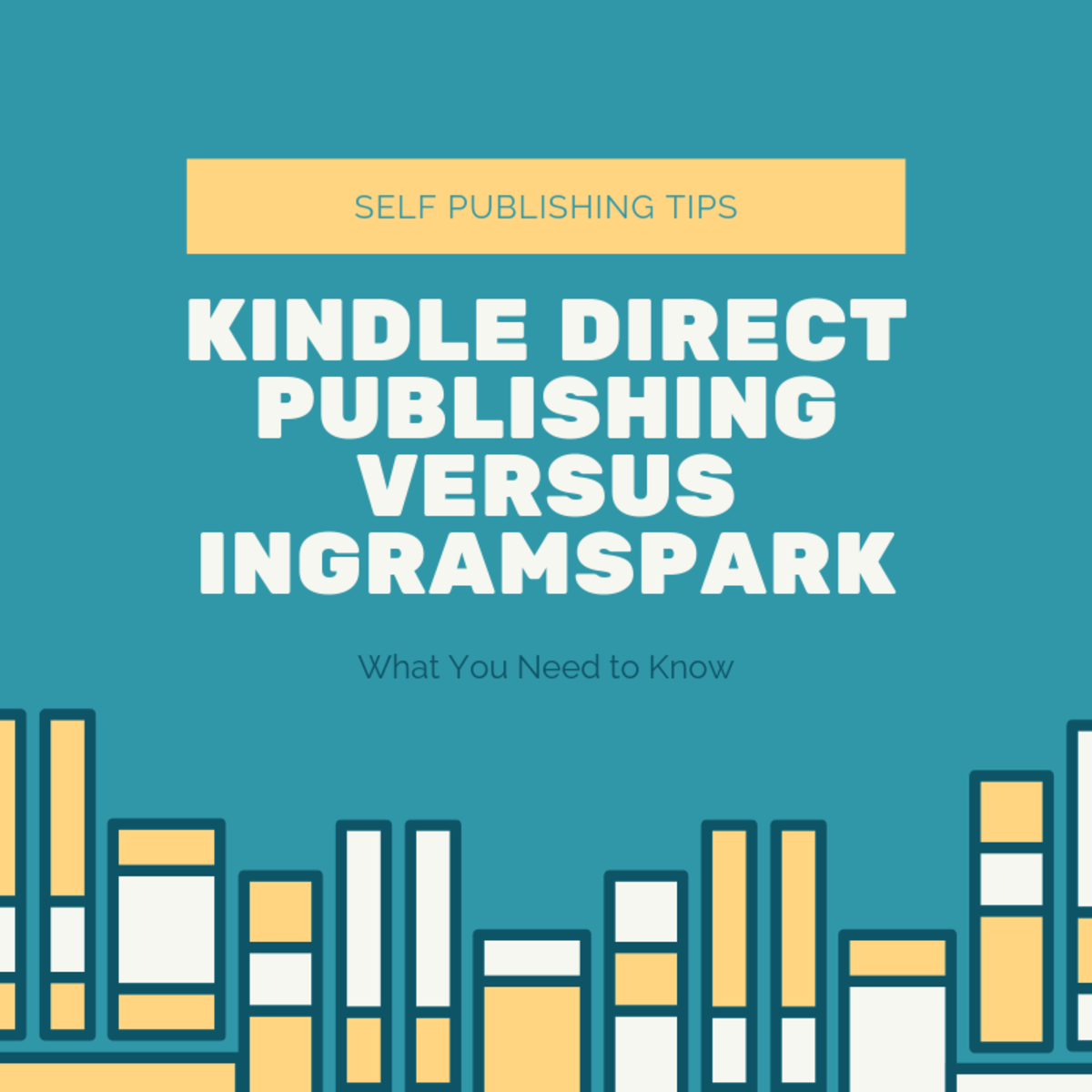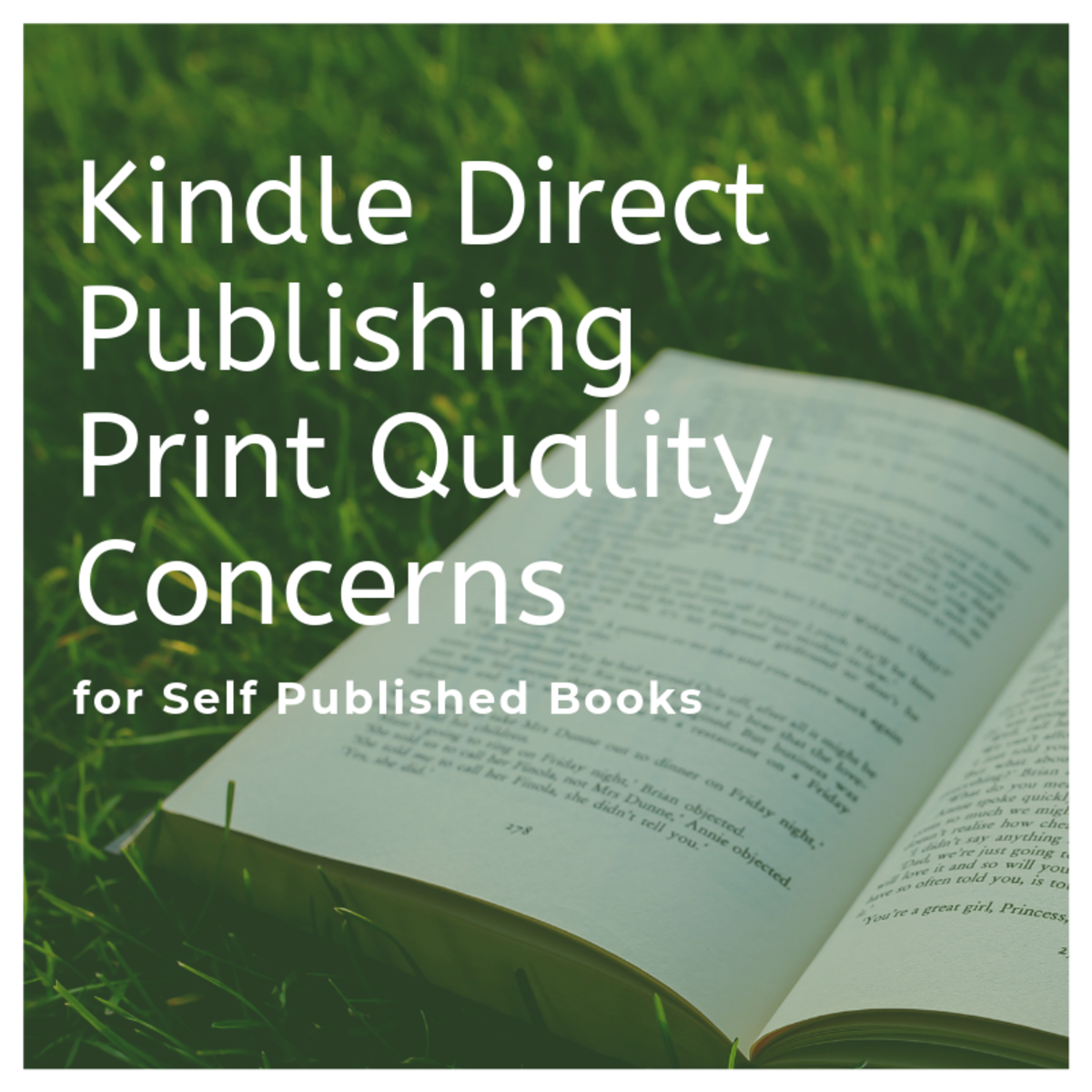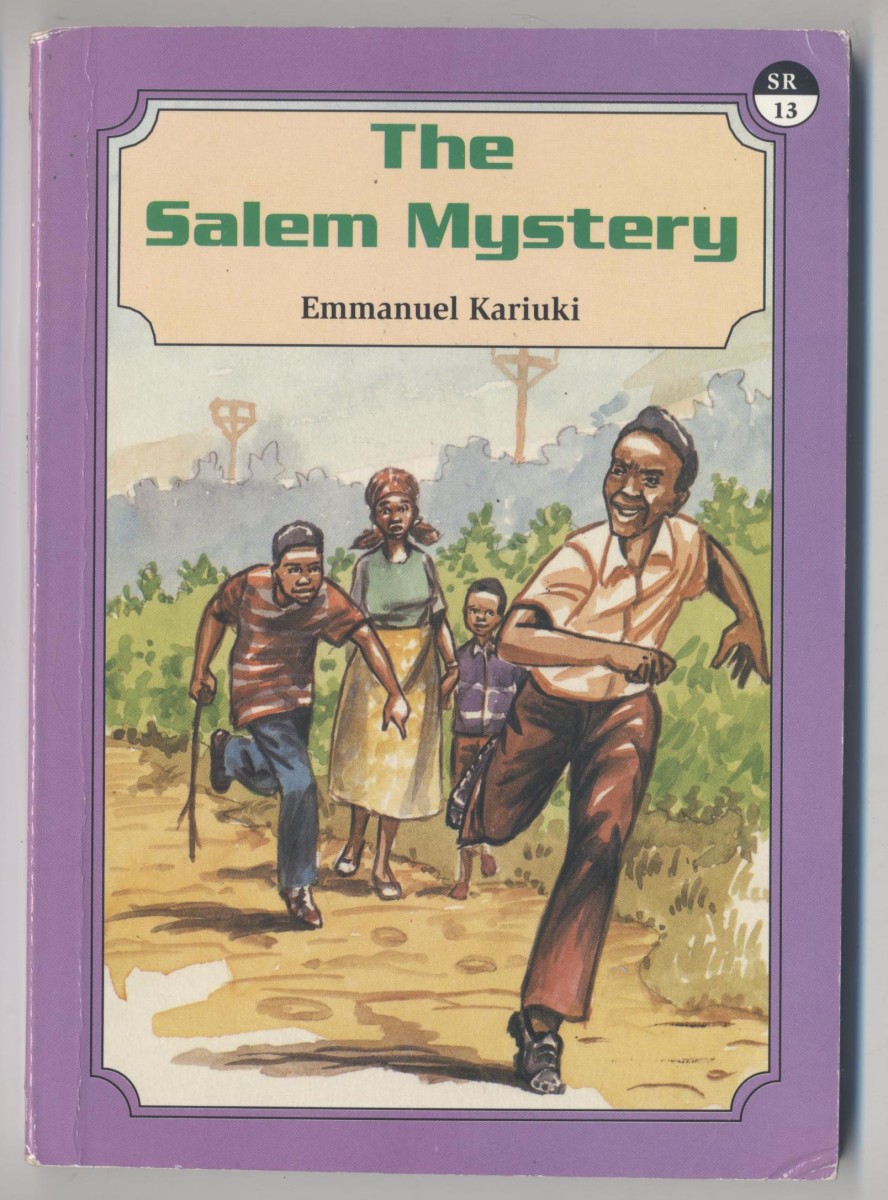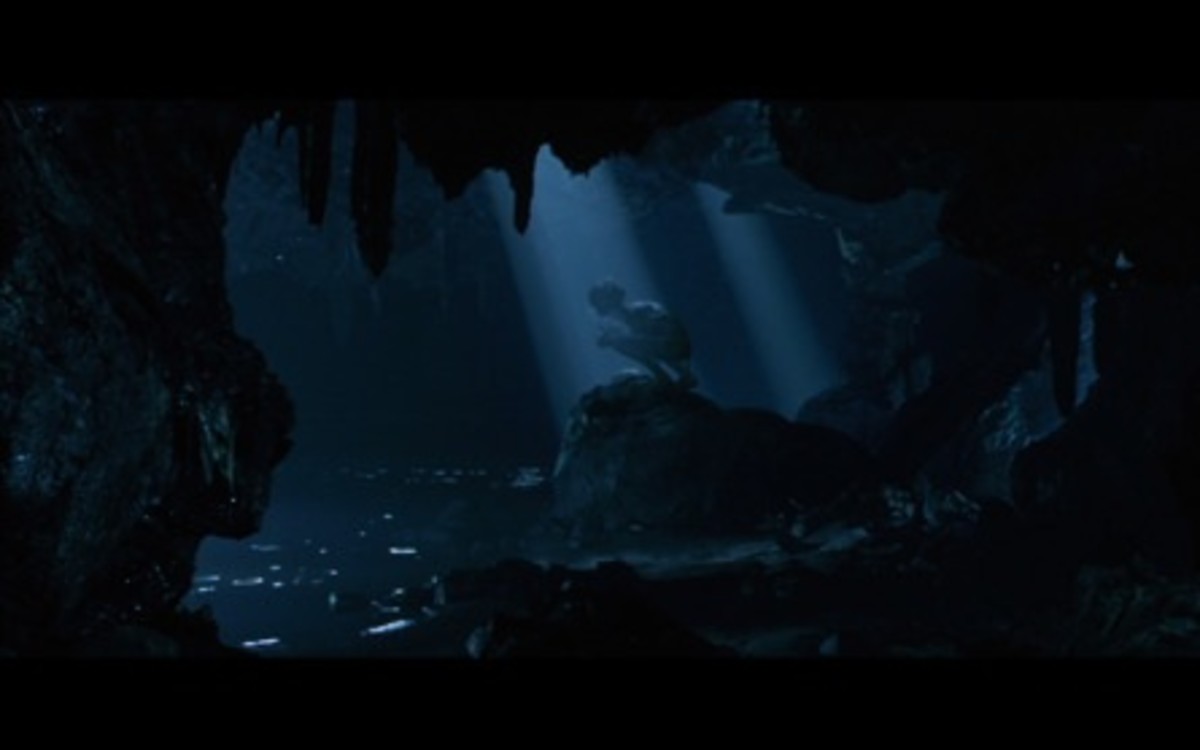Writers, Authors, Oral History Collectors...you DO have publishing alternatives
The new boss is not like the old boss
There was a time...and still is in some cases...where the best way for a budding author to get published was to search for a literary agent willing to represent his or her book. Then hope and pray that the agent had the juice to get it to an editor who might actually buy it. Or that author could go through the hell of submitting to publishers blindly, with the full knowledge that the odds of even getting a legitimate publishing house to look at it was about the same as hitting the Powerball...five times in a row.
As with everything else in our society, things are changing. The new boss when it comes to getting your books to potential readers is not at all like the old boss. In fact, to a great extent, that "boss" is Y - O - U!
See, not so long ago, the only alternative to the literary agent-editor-big publishing house route was what was derisively termed "vanity publishing." In other words, a would-be author paid some printer somewhere to print up a bunch of books, often with the "promise" of "marketing" assistance that never seemed to materialize. Many, many good writers (and tons of bad and mediocre ones) ended up with nothing to show for their literary efforts but a big debit on their Master Cards and a closet full of worthless books.
That was before some odd-sounding alternatives came into being: KDP, CreateSpace, PubIt, and others, such as SmashWords, that even pre-dated them but are rapidly loosing ground to those three entities.
E-books and POD
I think you would be surprised to learn that many literary giants were self-published. Not exactly a literary giant but a guy who has sold a book or two, John Grisham, sold most of the first printing of his novel A TIME TO KILL out of the trunk of his car. Still, it has always been a risky proposition since the author had to put up a bunch of cash to get the books designed, printed, and, theoretically, publicized and distributed. The latter two things rarely happened.
Then came e-books. And Amazon. And amazing technology called "print on demand," or POD.
See, I have learned quite a bit about self-publishing lately. I’ve been fortunate enough to have been published by some of the major houses—St. Martin’s Press, Penguin/Putnam, Tor/Forge, Thomas Nelson—and still do books with Penguin as we speak. My latest thriller, FIRING POINT, just came out in July. It is also true that I have been quite negative in the past (and in the previous paragraph) toward self-publishing and the vanity presses for the reasons stated.
However, for the right situations, we now have opportunities that did not exist even a few years ago. Amazon’s Kindle Direct Publishing (KDP) and CreateSpace services offer authors the chance to get their works in print for practically no out-of-pocket cost and with about as good a distribution mechanism as Penguin or Doubleday or Simon & Schuster have. Yes, the big publishers have salespeople who can convince chains and key independents to stock books, but that usually only helps established authors. They also have a publicity department that may be able to get a review or two and can send out review copies if requested to do so. But I bet my publicist at Penguin is working a hundred books at any given time. It falls on me to try to get interviews and media, just as it would if I self-published. Still, in some instances, the major houses—or a viable and aggressive regional presses—are still the better way to go for several reasons. They are not dead yet, so I urge talented authors--truly talented authors with ability and stories and characters that need exposure--to keep trying the old way. But there is no reason they can't go ahead and get their books out, finding readers, right now.
For people who do consulting, make lots of speeches or presentations, or are considered to be experts in their field, the Amazon program is absolutely a choice to seriously consider. Anybody with a built-in cadre of potential readers and ready-made way of informing those readers about the availability of a book would be a fool not to go the Amazon route. For those who have books with traditional publishers that are out of print and that have no hope of being re-issued, Amazon is also the clear choice, and especially if the author is still actively publishing and maintaining a presence and visibility. (Just be sure you have all rights back on the book--in writing--before you publish on KDP or CreateSpace or anywhere else. Some publishers get real irritable--and litigious--when they see properties they still own show up for sale somewhere else.)
But I don't know nothin' about no book publishing
Let's say you have all rights to your book and you have decided to try this new and exciting way of getting published. You should visit the two Amazon sites:for Kindle Direct Publishing (KDP) and CreateSpace and create accounts on each.
Simply put, KDP gives you the opportunity to publish electronic books for Kindles and other e-book readers…everything but the Nook, and Barnes & Noble has a similar publishing program called PubIt. It seems a tad harder to use but is similar in most ways to KDP. Kindle has about 75% of the e-book market last I saw so that, right there, means you will potentially have lots of readers for your masterpiece.
CreateSpace allows you to publish a traditional paperback book. Neither service charges you a dime to publish! CreateSpace does give you the option of purchasing what they call “extended distribution,” which assures the book will be available to the major book distributors, and it costs a whopping one-time charge of $25 per title! That means the paperback edition of the book shows up for order on most all the web pages of major book retailers, including Barnes & Noble and Books-A-Million. It can usually be ordered by someone from just about any independent bookstore in America, too. Understand, though, that practically no on-ground bookstores will likely order in copies of the book for their shelves unless you know the store manager or have contacts in the chain’s upper reaches. And, of course, your book is available for sale on Amazon.com, as is the e-book, just as easily searched, perused, and ordered as SHADES OF GREY or HARRY POTTER.
CreateSpace is a print-on-demand (POD) model. They won’t have a single copy of your book in stock at Amazon or anyplace else. When someone orders a book, Amazon prints it, binds it, and ships it. Amazingly, if you order my self-published book THE SPIN--one of the ones I have so far not convinced a publishing house to buy--and your order it early enough tomorrow, and you pay for one-day shipping, you will get the book the very next day! Stunning!
Writing for money
I worried about quality, but the books I have done so far look as good as or better than the ones done by the big boys. I admit that I am not thrilled with the font and spacing I used on my first book, RIDING THE SHORTWAVES, and no one has complained about it, but I will re-do it when sales slow down. See, if I change anything, the book goes off the market for a couple of days while it goes through the proofing process again.
Not only potential readers can order and read your book now. You can buy copies, too, and at a truly reasonable price compared to what I have seen "vanity presses" charge. There is no quantity discount, however. Buy one or a million and the price per copy remains the same, but shipping, of course, changes. And if you order larger quantities, It does take longer for you to receive the shipment. I ordered a hundred books and it took them ten days to get here, but I could have paid another $60 and had them in five days.
The e-books look pretty good, too, depending on the original file and cover that the author uploaded, as I will discuss later. I have even had compliments from critical e-book buyers about how good mine look compared to some of the big boys’ electronic books.
Self publishing done right
Amazon has this self-publishing deal down to a science.
Once a file of the book and the cover art are uploaded to KDP, it is checked and you have a proof, usually within 12 hours. If it looks good and you approve the proof, it is for sale almost instantly. If you have multiple books available, it may take a few days for all of them to be linked up. You may even have to prod them if you have several books by different publishers, or if you spelled your name differently on some of them.
For the paperback at CreateSpace, it usually takes about a day for an electronic proof to be available, or you can order a printed proof for a few dollars plus shipping. It will take it several days to arrive. Once you approve the paperback proof--online or after seeing the printed proof--it is immediately for sale in the CreateSpace “store,” which can be linked from your own web site or in promotional materials, emails, and social media posts. It then takes a few days to show up for sale on Amazon.com and they say up to two weeks to be available in their “extended distribution” channels. Compare that to traditional publishing where it can be months and months before a book is for sale after the final edit is submitted. And with the "big boys," the e-book has to wait for the paper edition to come out, too, so “marketing is aligned.” That hurts because over half the books purchased nowadays are e-books.
You can also see the royalty program as you go through the publishing process, too, as well as how much you will pay for your own copies of the book. I think the royalty plan is generous. Most of us nowadays get 7.5% to 10% of the publisher’s “net profit” on a book from the traditional houses…whatever “net profit” is. And they hold back royalties to cover any possibility of returns. Plus, the way they do accounting, it can take almost a year to get paid for a book that sells today. Both Amazon programs pay based on the list price of the book, and can be anywhere from a couple of dollars to ten bucks per book, depending on the channel through which the book was sold. You make the most on paperbacks sold through the CreateSpace store and the least on paperbacks sold through the “extended distribution” channels…they have to pay the middle-men!
Additionally, depending on the size of the printed book, copies you buy for yourself can cost as little as 10% to 30% of the list price. When I buy my own books from Penguin, I have to pay 60% of the cover price. I can buy them about as cheaply from Amazon! The Amazon programs say they pay within one to two months, though I have not yet gotten a royalty check to confirm that. I can see a detailed day-by-day report of sales of both kinds of books, by the way, including exactly how much I have earned so far. That is something you NEVER see from the big boys until you get that twice-a-year statement that can lag by up to almost a year.
So what's the catch?
Caveats: you have to format the book and design covers for both editions. They offer a very simple template but there are limited choices and they are not that impressive. They can connect you with book and graphic designers who will do it for a fee. Or you can do it yourself or hire someone you know to do it. They have plenty of help and tips available online including an active authors' user group.
I found the book design itself to be very simple to do if you already have a Word file and can follow their detailed instructions. KDP's online “proofer” did a great job of fixing some formatting issues automatically. The cover, which is very important in my opinion, is a little more involved but they offer downloadable templates, depending on trim size, number of pages, etc. I have some graphic design background…just enough to be dangerous…and I have done each of mine so far. I think they look OK, but can change them later if I decide to do so.
Note, too, that with CreateSpace, you have limited options for book size and paper that will be used. They recommend commonly accepted trim sizes and it makes sense to use one of them. You only have the choice of white or cream paper color.
I have not published a book with elaborate illustrations or pictures. They have a lot of guidance on such things available on their site but I have not looked at it to any extent.
I think this is going to revolutionize the book publishing business. In some cases, it is still far better to go the traditional route, through the old-line publishing houses. I think that is especially true of certain types of non-genre fiction. But more and more, Amazon is a wonderful option to consider.
And who knows what great services others are working on right now? Still, I am betting Amazon will be difficult to dethrone in this particular arena.
You mentioned oral histories in the title?
One aspect of KDP and CreateSpace that intrigues me is the ability to make living history easily accessible to researchers, family members, friends and a general readership. Many of my books are on World War II history and I am vividly aware of the importance of capturing the real stories of those who experienced that war, whether aboard a submarine, in a foxhole, in the cockpit of an airplane, or in a defense plant back home. We are losing that generation at a rate of over 1,000 a day!
Now it is possible to collect those recollections and stories, type them up, and publish them through Amazon's services so they are easily downloaded by anyone or so printed books are there at a reasonable cost. KDP and CreateSpace put minimum list prices on their books, but they are very, very low.
It does not have to be pretty or polished, but I urge anyone with a friend or relative who has stories to tell to record them, transcribe them, and publish them. This will preserve a vivid and crucial part of our history for future generations.
So my bestseller will be coming out soon!
Reality check: no one should assume that the big publishers are scrolling through Amazon’s self-published titles looking to buy the next bestseller. They don’t!
Nor should anyone assume that he or she can put an e-book and a paperback up there on Amazon and sit back and let the money roll in. As with that big-box bookstore down next to the mall, with hundreds of thousands of titles on the shelves at any given time, it is very likely your book will get lost in the clutter. That is one of the things a big publisher can do for you if they believe in your book. They can pay what it costs to make sure your book is up front at the big-box bookstores, cover facing out, on their “Recommended” shelf when you walk in the door.
Yes,it is true. Publishers pay for that, as well as for getting mentioned in the chain’s email, direct mail, print advertising, and other marketing. With self-publishing, YOU have to make people aware of the book! What are the odds they will stumble upon it and buy it? How do you create awareness after you have pounded all your family and friends about the book?
Well, that is a topic for another hub. Meanwhile, if you want to get your prose into print or bits/bytes in an e-book, if you want your work to find readers, you now have options unavailable to authors only a year or two ago.
So let your muse yak away, get it down on the computer, and get yourself published!








